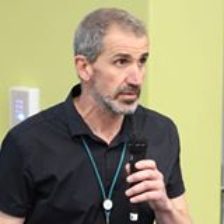
(4-minute read) – Divine psychotherapy is simple – meditation. And meditation is simply letting go.
Meditation methods have become more popular in post-modern western society as people seek integration between spirituality and psychology. Contemporary mystics like Thomas Keating liken meditation to ‘a kind of divine psychotherapy.’
Mystical traditions and psychotherapy share the same goal. They seek self-knowledge and growth through insight into our hidden motivations. Ascetical tradition seeks insight into our emotional needs that influence our thinking, feeling and activity without us being fully aware of them.
Keating writes:
“There is a tendency in human nature to reach out for more life, more happiness, more of God; but there are also self-destructive tendencies that want to go back to the unconscious and instinctual behaviour of the beasts. Even though we know that there is no happiness in such regression, that aspect of the human condition is always lurking within us. [. . . ] We have to come to grips with these tendencies in order for the fullness of grace to flow through us. Contemplative prayer fosters the healing of these wounds. In psychoanalysis the patient relives traumatic experiences
of the past and in so doing, integrates them into a healthy pattern of life.”
In Keating’s schema the unconscious behaviour of the beasts is synonymous with what I have called the deluded status quo of the false self. Although there is some difference in terminology, the basic idea that there are superficial and deeper dimensions to humans is the same.
What about psychoanalysis?
The same basic idea arose in the psychoanalysis of Sigmund Freud (with his ‘death instinct’) and Carl Jung (with his archetypical spiritual mirrors of the instincts)
Healing through meditation is brought about through the practice of letting go. As simple as it sounds, it is a lifelong journey. The practice of letting go is paradoxically simple, yet never complete, and hence not simple.
The practice of letting go is not that different to psychoanalysis. Both may involve reliving painful events of the past in order to grow. In meditation, the way to let go is to sink into it, identify with it and let it gently pass – similar to regression therapy in psychoanalysis.
The practice of letting go
The ultimate objective of the practice of letting go is developing the habit of surrendering to a divine presence and action. To paraphrase in psychological terms, this is developing the habit of surrendering egotistical narcissism to the freedom of a wider understanding of reality or a deeper self-knowledge, or individuation, in Jung’s language. In yet other terms, this surrendering may be considered as giving up on all the attachments of the false self and resting in the resulting emptiness (or darkness and silence) until new consciousness emerges.
The practice generally involves the use of a symbol or mantra to focus our intention to surrender. As opposed to an object of attention or concentration, it is merely a gentle reaffirmation of intention. Our role is merely to consent to the penetration of reality beyond the deluded constraints of the ego consciousness. So the method is to accept the emptiness of mental, physical and emotional silence, so as to hear the true self.
The correlation
To see the correlation between the practice of letting go and psychological therapy, one has to look further back in history than the start of the age of psychology. One has to consider the development of human strivings for knowledge and understanding, particularly as they relate to aspects of meaning and transformation.
Before the age of psychology (which is considered to be about one hundred and fifty years ago), Europe, where psychoanalysis was born, found its answers to life’s meaning in religion.
Despite the fissure between the physical sciences and religion, most still looked to religion, or at least spiritual traditions, when it came to matters of what gave meaning and what explained how humans experienced life.
The psychological revolution lagged behind the rest of the scientific revolution because its subject matter was unmeasurable inner human psychological working.
However, as freedom from the authority of pre-enlightenment institutions grew, ‘scientism’ wedged free religion’s hold over meaning. The stage was set for the emergence of psychotherapy as the carrier of answers to life’s questions on human nature and meaning.
The wheel has turned
Now, we are in a post-modern world where the wheel has turned, to an extent. We have not gone back to authoritarian religion of pre-enlightenment Europe.
But we do appreciate mystical traditions again as the carriers of psychological healing and deep meaning for the human condition.
We have now got access to the mystical traditions of first peoples from all over the world. And we see great similarity in their central tenet. The central tenet is the healing power of the deeper self. We see that divine psychotherapy has been around since the very beginning of human consciousness.
Make sure to follow me on Twitter @MichaelHowardZA for regular updates and join the conversation on Facebook about my articles.

Very informative and enlighting. I am getting closer to learning how to meditate.